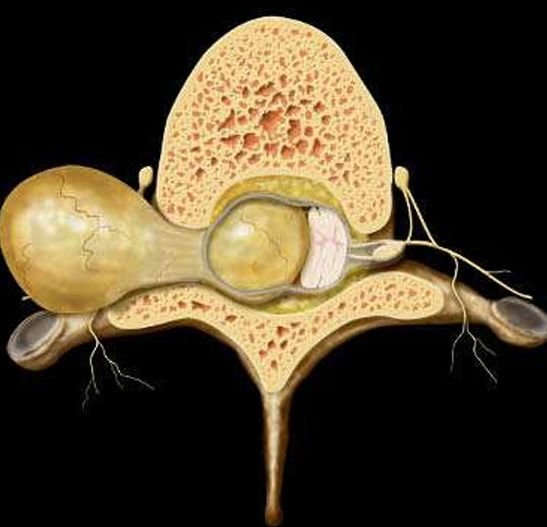Lipoma
Lipoma
Pediatric spinal lipomas are rare congenital malformations characterized by an abnormal accumulation of fatty tissue along the spinal cord or within the spinal canal. These benign tumors can cause tethering of the spinal cord, leading to neurological deficits if left untreated. Early diagnosis and surgical management are crucial to prevent permanent neurological damage in affected children. In Bangladesh, the diagnosis and treatment of pediatric spinal lipomas face challenges due to limited awareness, delayed presentation, and scarcity of specialized pediatric neurosurgical services. Dr. Md. Nafaur Rahman, a leading pediatric neurosurgeon in Bangladesh, provides advanced surgical care and comprehensive management of spinal lipomas, helping children achieve optimal neurological outcomes. What is Pediatric Spinal Lipoma? Spinal lipomas are collections of fatty tissue that are often congenital and may be associated with spinal dysraphism—a spectrum of spinal cord developmental anomalies. These lipomas may be located: Intramedullary (within the spinal cord) Extramedullary (outside the spinal cord but inside the spinal canal) Dorsal or filum terminale lipomas They cause tethered cord syndrome, where the spinal cord is abnormally attached, restricting its movement and leading to progressive neurological impairment. Causes and Risk Factors Result from incomplete closure of the neural tube during embryonic development Associated with other spinal malformations such as spina bifida, meningoceles, or dermal sinus tracts Usually sporadic, with no direct hereditary pattern Symptoms and Clinical Presentation Symptoms may not be obvious at birth but typically appear during infancy or early childhood. Presentation depends on the degree of tethering and neurological involvement: Back pain or discomfort Leg weakness or numbness Difficulty walking or foot deformities Bladder and bowel dysfunction such as incontinence or urinary retention Visible skin changes over the lower back: hairy patch, dimple, or swelling Progressive scoliosis or spinal deformity in some cases Delayed diagnosis can lead to permanent disability. Diagnosis in Bangladesh Dr. Md. Nafaur Rahman employs a careful diagnostic approach combining clinical and imaging assessments: 1. Detailed Clinical Evaluation Neurological examination focused on motor, sensory, and reflex function Assessment of bladder and bowel control Inspection for cutaneous markers of spinal dysraphism 2. Imaging MRI of the spine is the gold standard to identify lipoma size, location, and tethering effects Ultrasound may be used in neonates for preliminary screening X-rays help evaluate associated vertebral anomalies or scoliosis Treatment and Surgical Management Spinal lipomas are treated primarily with surgical untethering to free the spinal cord and prevent further neurological deterioration. Goals of Surgery Release the tethered spinal cord Preserve or improve neurological function Minimize surgical complications Prevent recurrence of tethering Surgical Techniques by Dr. Nafaur Rahman Microsurgical resection using high-powered operating microscopes Careful dissection to separate fatty tissue from functional spinal cord Reconstruction of dura mater to prevent cerebrospinal fluid leakage Spinal stabilization if deformities are present Prognosis Early surgical intervention before neurological symptoms develop has the best outcomes Untreated or delayed cases may develop irreversible motor and sensory loss, bladder dysfunction, or orthopedic deformities Lifelong follow-up is necessary to monitor for retethering or new neurological symptoms Challenges in Bangladesh Lack of awareness among primary care providers leading to delayed referrals Limited access to pediatric MRI and neurosurgical expertise outside Dhaka and major cities Financial and social barriers to timely treatment Misdiagnosis as benign skin conditions or musculoskeletal pain Why Choose Dr. Md. Nafaur Rahman? Extensive experience in managing complex pediatric spinal dysraphism and lipomas Uses modern microsurgical techniques to maximize safety and outcomes Provides care at both National Institute of Neurosciences & Hospital (NINS) and Bangladesh Paediatric Neurocare Centre Focuses on holistic, child-friendly care including postoperative rehabilitation Collaborates with pediatric neurologists, urologists, and physiotherapists for comprehensive treatment Contact for Appointment and Consultation Dr. Md. Nafaur Rahman Assistant Professor, Pediatric Neurosurgery National Institute of Neurosciences & Hospital (NINS) Chief Consultant, Bangladesh Paediatric Neurocare Centre 📞 For Serial/Appointment: 01912988182 | 01607033535 🌐 Website: www.neurosurgeonnafaur.com










